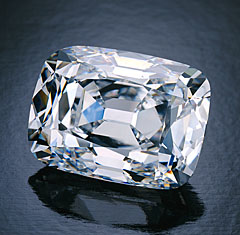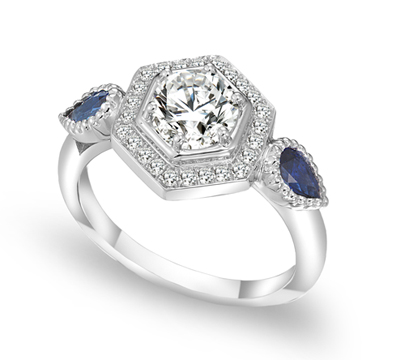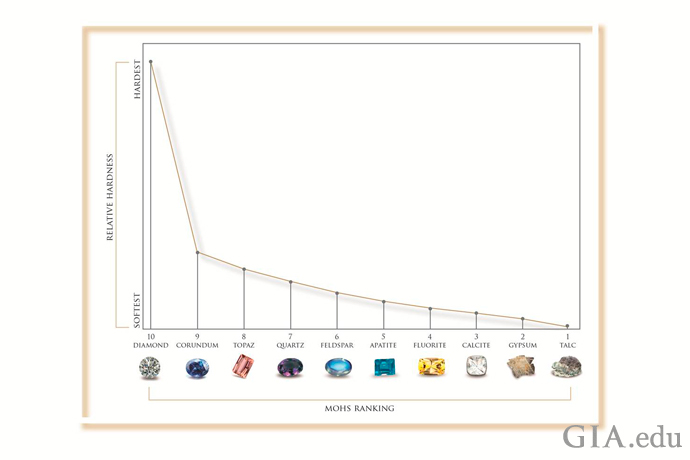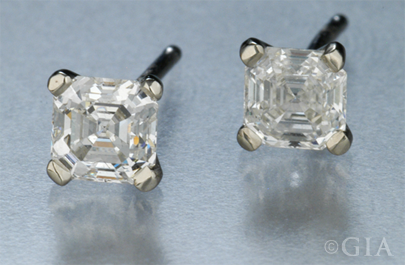The Angels may be rocking Victoria’s Secret bras at tomorrow’s 2012 fashion show on CBS, but we have two replicas of prior years Fantasy Bras at GIA in Carlsbad that you can get up close and personal with. (more…)

The Angels may be rocking Victoria’s Secret bras at tomorrow’s 2012 fashion show on CBS, but we have two replicas of prior years Fantasy Bras at GIA in Carlsbad that you can get up close and personal with. (more…)

On November 13th, 2012 Christie’s Geneva auctioned one of the world’s most important diamonds, the Archduke Joseph, for $21.5 million. The 76.02 ct, D-color Internally Flawless cushion cut went for more than $280,000 per carat, a new record for colorless diamond. (more…)
One of the hardest of the 4Cs to understand may be a diamond’s cut. A well-cut diamond displays the unique sparkle we associate with diamond. (more…)
It has been said that few things in nature are absolutely perfect. The same holds true of diamonds. Part of what makes a diamond unique is what is commonly referred to as a diamond’s clarity characteristic. (more…)

Some of the most popular engagement ring trends seen on celebrities and the public alike are rings with vintage details, pave diamond accents, and colored gemstones used as center stones. (more…)
When browsing for jewelry, one might be captivated by the glimmer of a diamond’s sparkle, and assume that most diamonds are colorless. And while it’s true that certain diamonds have colors so blindingly brilliant that they take on beautiful hues of the rainbow, truly colorless diamonds are actually quite rare. (more…)

Diamonds are known for being one of the hardest substances on earth. A diamond is so hard it ranks as a 10 on the Mohs scale–the highest level of hardness. But what is the Mohs scale? (more…)
Part 1 – An Industry without Standards or Formal Education
Though diamonds and other gemstones have been collected and coveted for many centuries, it has taken almost as long for diamond cutters and jewelers to learn how to reveal a gemstone’s inner beauty.
As early as the 1300s, European stone cutters were changing crystals by polishing their faces so that no natural irregularities of the original crystal remained. While this type of polishing and cutting did allow light to reflect off the outer surface, the fire and brilliance remained hidden inside. Small changes introduced over the next few centuries made diamonds more interesting, but still hid the potential of diamonds to return light as we know it today. (more…)

Purchasing a diamond ring can be overwhelming. After you get through the education process of learning the diamond 4Cs there is still one more piece of the puzzle: understanding the difference between a grading report and an appraisal. (more…)

Some diamond cut’s never go out of style, especially when they boast a royal heritage and have been redesigned and reinvented. Such is the case with the popular Asscher cut. (more…)
Few things in nature are absolutely perfect. This is also true with diamonds. As touched on in the first part of the clarity series, diamonds have internal features called inclusions and surface irregularities called blemishes. Together, inclusions and blemishes make up a diamond’s clarity characteristic. (more…)
Diamond clarity is one of the four quality factors (the 4Cs) that describe and determine the value of a diamond. By definition, clarity means “a gemstone’s relative freedom from inclusions and blemishes.” These two terms are locational- blemishes are found on the outside of the gem and inclusions are located on the inside. Both of these clarity characteristics can dim the brilliance of a diamond, though some are so minute that they are invisible to the naked eye. (more…)
Use of this site signifies your agreement to its terms of use.
© 2002 – 2024 Gemological Institute of America Inc. GIA is a nonprofit 501(c)(3) organization.
All rights reserved.